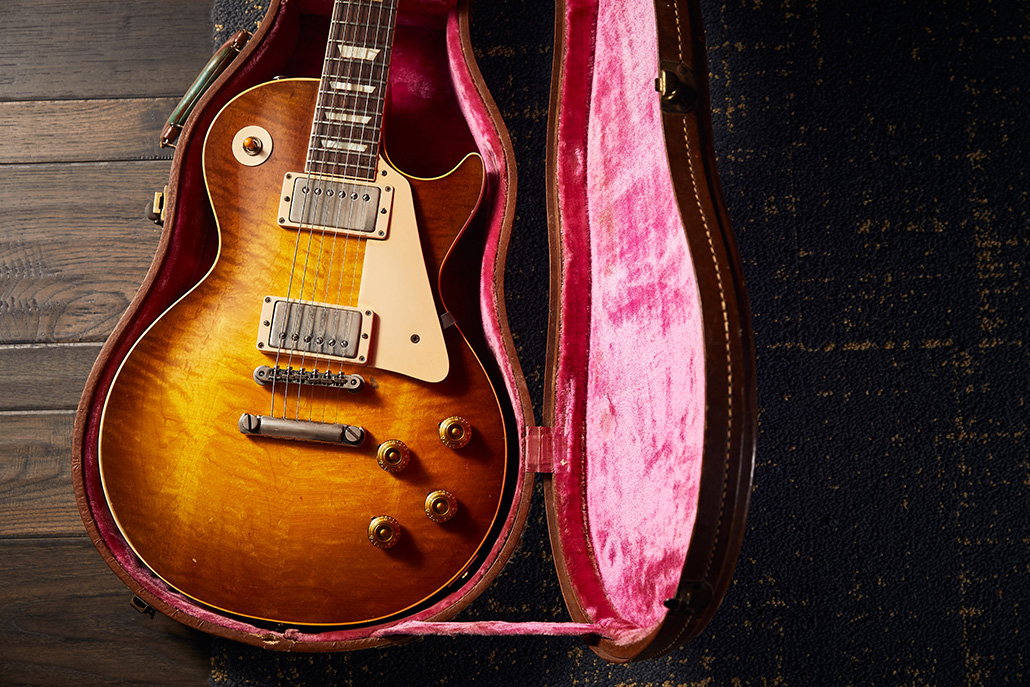70 years may be a blink in the eye of history but, over the course of seven decades, the Gibson Les Paul has carved out a monolithic presence in popular culture
As old as rock ’n’ roll itself, since 1952 the Gibson Les Paul has traveled along musical ley lines, appearing at liminal evolutionary moments and helping legendary musicians to change the course of pop music history. Freddie King’s Goldtop, Clapton’s fabled “Beano,” Jimmy Page’s Number One, “Greeny”—these are the guitars that rock ’n’ roll dreams are made of.
It’s fitting, then, that the man whose name adorned their headstocks was both a musical and technical visionary whose legacy can be heard in almost every piece of recorded music we hear today.
Who was Les Paul?
Lester William Polsfuss was born on the outskirts of Milwaukee in Waukesha, Wisconsin, on June 9, 1915. Known to the world by his stage name, Les Paul, he experimented with music, electronics, and guitar design his entire life. As a child, Les was busy creating his own amplification by attaching a phonograph pickup to the top of his guitar.
Later on, he became a pioneer of multitrack recording, dramatically expanding the scope of creativity in the studio and paving the way for the multi-layered pop symphonies by the likes of The Beatles and The Beach Boys that would follow in his wake.
Les Paul’s first broadcasting success was on radio with television close behind, and multiple GRAMMY® Awards were soon forthcoming. During the latter part of his career, he returned to the stage weekly in New York City—first at the club, Fat Tuesdays, and finally at the legendary Iridium, where he held court with a stellar band and many world-class guest musicians.
Though he died in 2009 at the grand old age of 94, Les Paul’s legacy endures today through each carefully crafted Gibson and Epiphone signature guitar, igniting the imagination, inspiration, and innovation of millions of guitarists across the globe.
Perfect chemistry
The guitar that bears Les Paul’s name is, in many ways, the culmination of a journey. A pioneering solidbody electric guitar whose DNA can be traced back to the feedback-eliminating properties of Les’s famous “Log,” the Les Paul Model was rendered through the lens of Ted McCarty in the tradition of Gibson’s beautiful archtop designs.
McCarty was another genius without whom popular music simply would not sound the same and, under his watchful eye, the Gibson Les Paul evolved throughout the 1950s into various iterations, all now iconic. The Les Paul Custom, the Les Paul Junior, the Goldtop—musical instruments that can still be heard today in almost every record collection, and on concert stages and playlists the world over.
All about the Burst
Even among such exalted company, what is it about the 1,400 or so Sunburst Les Paul Standards made from 1958-1960 that makes them so special, so lusted after, and so extraordinarily valuable? Let’s bust one Burst myth right out of the gate: it’s not simply because of their age.
Listen to recordings of Eric Clapton-era Bluesbreakers, Michael Bloomfield, or Peter Green from the late 1960s. Those Les Pauls sound articulate, explosive, and every inch the real deal, despite being fewer than 10 years old when they were captured on tape.
If the almost supernatural tonal characteristics of those instruments were baked in from the moment they left the factory, is the way a Burst sounds down to its original “Patent Applied For” pickups? Bumblebee capacitors? Old-growth Honduras mahogany? The answer is all of those things and more.
An electric guitar is a system in which all of the individual parts and components are designed to work in harmony in order to translate vibrations into an audio signal. The magic of the Sunburst Les Paul comes from its unique recipe and, in the hands of the right player, the interaction between its components, materials, and geometry creates a sound like no other.

When the first Bursts left Kalamazoo in 1958, the Les Paul’s recipe had been perfected. Although it took players several years to discover just how potent these instruments were, the electric blues and rock sounds of the late 1960s and early 1970s—and the new amplifier and effects technology that enabled them—cemented the Sunburst Les Paul Standard as the greatest and most iconic rock guitar ever made.
Over half a century later, the world is still rocking, and the allure of these holy grail instruments is stronger than ever.
Find out more about the Gibson Les Paul or shop Gibson Custom Les Pauls with Murphy Lab aging and pick the exact top you want.

